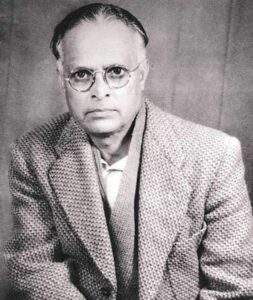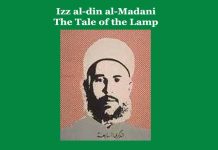R K Narayan | Leela’s Friend | An Analytical Study
R K Narayan | Leela’s Friend | An Analytical Study
R K Narayan | Leela’s Friend | An Analytical Study
‘Leela’s Friend’ is a short story written by R. K. Narayan (1906-2001) an Indian English short story-teller and novelist. The main theme of the story is affection and injustice. Through the story, the author has shown that the poor often become the victim of the injustice of the rich.
It is the story of a servant named Sidda. He is the servant to the house of Mr. Sivasankar. He does all the household works as- washing clothes, running errands, chopping wood, and looking after Leela, a five years old daughter of Mr. Sivasankar. From the first day, good intimacy develops between Leela and Sidda. Leela takes Sidda as her sole playmate, she keeps with him almost all the time- while working in the garden, while he chops woods and even at bedtime he would tell her stories. Sometimes Leela takes great joy to play master to Sidda and she makes him squat on the floor with a pencil between his fingers and a book. All the more whenever Sidda goes Leela follows him. One evening Sidda goes tot to buy some sugar and Leela follows her. When they return home Leela’s mother notices that the gold chain that she was wearing is missing. She asks Leela about it but says that she does not know. Then she calls in Sidda. He begins to shudder and says that he is unaware of it. Mr. Sivasankar when returns home grows excited. Sidda goes away at night. Mr. Sivasankar goes to the police station and lodges with them a complaint. Leela is almost mad at him. Some days later the police catch Sidda and bring him to the house of Mr. Sivasankar. Leela becomes overjoyed but they do not allow Leela to reach him. The police take him to the police station. Some days later Leela’s mother discovers the chain in a pot of tamarind. Leela admits that she kept it someday.
There are four characters in the story. Sidda is the main character. He is honest and dutiful but he becomes the victim of the injustice of his master. He is portrayed as a type of the poor. Likewise, Mr. Sivasankar and Mrs. Sivasankar are the representatives of the rich. Well-to-do people like them always treat the poor with negligence and they put disbelieve upon them for the least reason without rhyme and reason. The other character is Leela. She is innocent and full of childish affection. Her parents wound her feeling by doing injustice to Sidda.
The author has employed an objective Method and narrates his story faithfully from the outside.
The story, in Structure, is well one. The exposition is direct. The complication of the story begins late and it begins when Leela goes out with Sidda to buy some sugar and it continues till the climax when Sidda gets arrested. The denouement happens when Leela’s mother discovers the chain in a pot of tamarind.
The Setting of the story is consistent with the events and situation. The author gives a good deal of description of the atmosphere and manners of his characters.
The Dialogue employed in the story is very logical as he uses them economically but all the dialogues have played the roles of developing the story and of unfolding the characters.
The author has expressed his Philosophy of Life not directly but indirectly through the story and suggests that the poor often become the victim of the rich.
The Language of the story is very simple as it is characterized by the use of simple, concrete, and formal words and phrases, free from complicated sentence construction.
All the Qualities of a good short story as — unity of purpose, brevity, spontaneity and universality are present in it. The brevity is also maintained throughout the story as all the component elements of a good short story are used in the story. Thus the universality is achieved by means of the reliable representation of the event. The story begins and ends with spontaneous logical order through proper stages.
As all the component elements along with the required qualities of a good short story are present in it in a logical order, so it may be called a short story of the first grade. 0 0 0
R K Narayan | Leela’s Friend | An Analytical Study
Read More: R K Narayan’s Short Stroy ‘The Martyr’s Corner’-An Analytical Study
N. B. This article entitled ‘R K Narayan | Leela’s Friend | An Analytical Study’ originally belongs to the book ‘World Short Story Criticism‘ by Menonim Menonimus. R K Narayan | Leela’s Friend | An Analytical Study
Books of Literary Criticism by M. Menonimus:
- World Short Story Criticism
- World Poetry Criticism
- World Drama Criticism
- World Novel Criticism
- World Essay Criticism
- Indian English Poetry Criticism
- Indian English Poets and Poetry Chief Features
- Emily Dickinson’s Poetry-A Thematic Study
- Walt Whitman’s Poetry-A Thematic Study
- Critical Essays on English Poetry
- Tawfiq al-Hakim’s Novel: Return of the Spirit-An Analytical Study
- Tawfiq al-Hakim’s Novel: ‘Yawmiyyat Naib Fil Arayaf’-An Analytical Study
- Analytical Studies of Some Arabic Short Stories
- A Brief History of Arabic Literature: Pre-Islamic Period …
Books on Linguistics by M. Menonimus:
- A Brief History of the English Language
- Essays on Linguistics
- My Imageries
- Felicitous Expression: Some Examples
- Learners’ English Dictionary
Related Searches:
- Short Stroy Criticism
- The Indian English Short Story
- Individual and Society …
- ‘Deliverance’ by Premchand Analysis
- Summary of Rabindranath Tagore’s ‘The Exercise Book
- Short Story ‘Yellow Fish’ Essay Example
- Notes on Roger Mais’s ‘Blackout’
- ‘Blackout’ by Roger Mais
- ‘The Dog of Tetwal’ Saadat Hasan Manto
- The Three Questions
- R. K. Narayan Biography, Books
- Short Stories R. K. Narayan
- ‘Lawley Road’ by R K Narayan
- The Peasant’s Bread’ Summary Notes
- The Imp and the Peasant’s Bread
- How Much Land Does a Man Need
- How Much Land Does a Man Need? Question
- ‘A Prisoner in the Caucasus’ by Leo Tolstoy
- Leo Tolstoy ‘A Prisoner in the Caucasus’
- ‘Leela’s Friend by R K Narayan: Analysis
- Leela’s Friend by R K Narayan …











